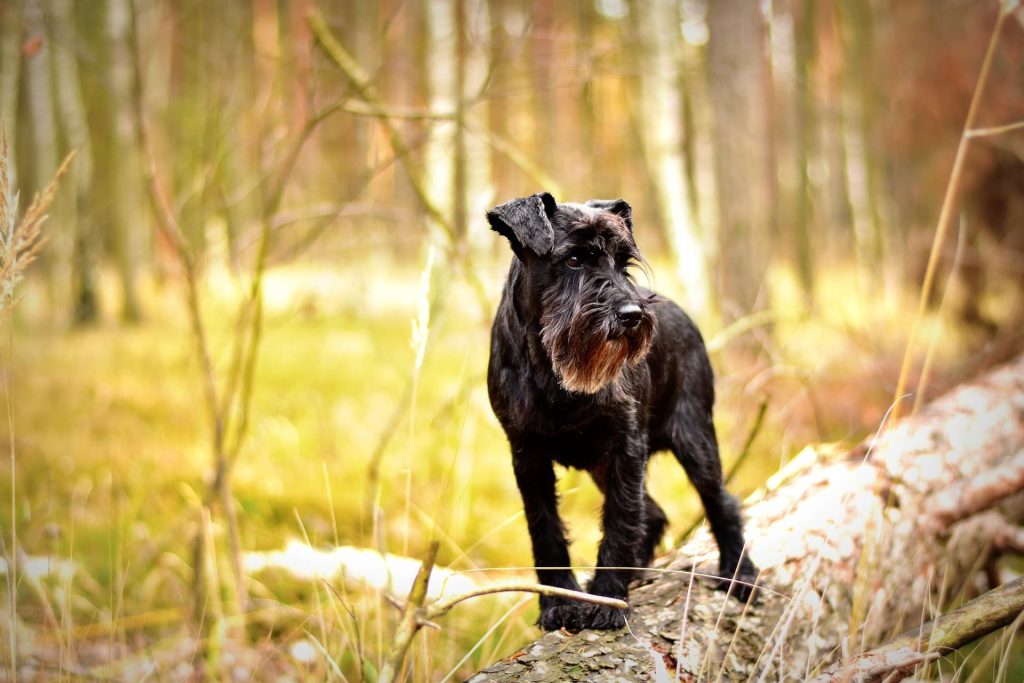Estimated reading time: 5 minutes
Bob, the miniature schnauzer: a lockdown case study.
Lockdown proved to be an unexpected hurdle at the start of Bob’s young life. Bob arrived at his new home in February 2020. He was an easy puppy. Having spent his first 8 weeks of life with his mother and 4 other puppies Bob had begun to learn important canine social skills and now was the time for him to begin learning how to interact with humans. From the first night he slept quietly and calmly in his crate and within 3 weeks was house trained. Bob always let his owners know when he wanted to go out into the garden and the only time he had an accident was if they had left the room.

Early Education
Once Bob had settled into his new surroundings and had completed his vaccinations, his education began. He went out for walks, met the neighbourhood dogs and people as well as all the visitors who came to see him. Bob went to the local pub where he learned to interact calmly with strangers and other dogs. All was going well until March and lockdown. No visitors to the house, no trips to the pub, no real interactions with the neighbours, except from a distance.
Before Lockdown
Bob was 3 months old at the beginning of lockdown. A critical time in his development. Having had lots of social interaction, Bob had learnt some manners when greeting people outside and greeting visitors to the house. Of course, he was bouncy and a bit giddy but had learned to sit and wait to be greeted. Bob was used to travelling in the car (safely restrained in his travel crate), was happy to be left for short periods (again in his house crate), was sociable with other dogs and was generally developing into a lovely dog.
During lockdown
Bob, along with his owners, had limited opportunities to socialise and meet people and other dogs when the COVID-19 restrictions were imposed in March. No visitors to the house, no trips to the pub, only short periods of exercise with no interaction with other dogs and people. Bob could not practise the manners and lessons he had learnt during his first few weeks of his education.
Even though his owners were unable to continue Bob’s education in the way they had started, they remained committed to providing him with plenty of mental and physical stimulation. They introduced interactive games in the house and garden as well as practicing basic obedience exercises.
To help make up for the lack of social interactions, Bob’s owners took him out in the car when going to the supermarket for essential supplies. One of them would sit with him with the tailgate lifted so that Bob could still see and hear people, cars and the general hustle and bustle of a supermarket carpark.
Bob was a happy and contented young dog. Continuing to sleep quietly in his crate overnight and being relaxed in his crate in the car. He was fully house trained and a joy to own, but as the COVID-19 restrictions were lifted and life returned to the new normal, problems began to develop.

After lockdown
Bob was now 6 months old and friends and family wanted to come and see him. Bob was a nightmare! Forgetting all his previous training he greeted visitors in a frenzy: clearly over excited, jumping up, whining and spinning. Bob had no self-control!
Naturally, Bob’s owners were mortified!! What had gone wrong? Bob had not seen any visitors for many weeks. Bob had been able to watch people from a distance when in the car but unable to interact with them. Although not obvious to his owners, Bob was becoming more and more frustrated at not being able to greet people. As a sociable dog, he was so excited to see people he was unable to contain himself and became a whirling dervish.
There was another problem! Leaving Bob alone during the day was no longer possible – although he was happy to sleep in his crate throughout the night. His owners had been working from home during lockdown and now that they were leaving the house Bob was frantic when left on his own. Bob screamed if put into his crate, but was still fine overnight.
Bob had become over attached and dependent on his owners. Prior to lockdown he had become accustomed to short periods of isolation during the day. But during lockdown, his owners had become his constant and only companions. Now, any form of separation from them caused him significant distress.
Bob’s owners also noticed that he had become more reactive to noises outside the house. Living close to a school involved plenty of traffic noise and children passing and Bob was used to this. When the school shut the road became quiet but as the school children returned and the general noise level increased Bob appeared to be worried.
Bob Now
Bob’s owners were quick to seek help from a dog behaviour specialist. Not only did they begin a series of methods to re-train Bob, but their behaviourist had a background in nutrition and was able to explain about Breakthrough Dog Food and how it might help Bob.
Bob’s owners introduced the Breakthrough food over a period of days. Within a couple of weeks, Bob’s anxiety levels and over excitability had reduced significantly and he was responding well to his new training regime.
Now, Bob continues to eat Breakthrough and is the happy young dog his owners wanted.
Solving behaviour problems with Breakthrough Dog Food
Breakthrough Dog Food supports behaviour and welfare needs with specific formulation. Contact Breakthrough Helpline on


